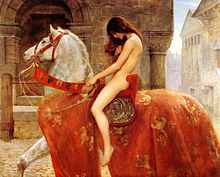
Back Legende Afrikaans Legende ALS Leyenda AN سيرة بطولية Arabic কিংবদন্তি Assamese Lleenda AST Jawari Aymara Əfsanə Azerbaijani افسانه AZB Легенда Bashkir

A legend is a genre of folklore that consists of a narrative featuring human actions, believed or perceived to have taken place in human history. Narratives in this genre may demonstrate human values, and possess certain qualities that give the tale verisimilitude. Legend, for its active and passive participants, may include miracles. Legends may be transformed over time to keep them fresh and vital.
Many legends operate within the realm of uncertainty, never being entirely believed by the participants, but also never being resolutely doubted.[1] Legends are sometimes distinguished from myths in that they concern human beings as the main characters and do not necessarily have supernatural origins, and sometimes in that they have some sort of historical basis whereas myths generally do not.[2][3] The Brothers Grimm defined legend as "folktale historically grounded".[4] A by-product of the "concern with human beings" is the long list of legendary creatures, leaving no "resolute doubt" that legends are "historically grounded."
A modern folklorist's professional definition of legend was proposed by Timothy R. Tangherlini in 1990:[5]
Legend, typically, is a short (mono-) episodic, traditional, highly ecotypified[6] historicized narrative performed in a conversational mode, reflecting on a psychological level a symbolic representation of folk belief and collective experiences and serving as a reaffirmation of commonly held values of the group to whose tradition it belongs.
- ^ Georges, Robert; Owens, Michael (1995). Folkloristics. United States of America: Indiana University Press. p. 7. ISBN 0-253-32934-5.
- ^ Baldick, Chris (2015). Legend. Oxford University Press – Oxford Reference Online. ISBN 978-0-19-871544-3. Archived from the original on 2021-04-26. Retrieved 2021-04-24.
A story or group of stories handed down through popular oral tradition, usually consisting of an exaggerated or unreliable account of some actually or possibly historical person—often a saint, monarch, or popular hero. Legends are sometimes distinguished from myths in that they concern human beings rather than gods, and sometimes in that they have some sort of historical basis whereas myths do not; but these distinctions are difficult to maintain consistently. The term was originally applied to accounts of saints' lives..
- ^ Bascom, William Russell (1965). The Forms of Folklore: Prose Narratives. University of California. pp. 4–5, 9.
Myths are often associated with theology and ritual. Their main characters are not usually human beings, but they often have human attributes; they are animals, deities, or culture heroes, whose actions are set in an earlier world, when the earth was different from what it is today, or in another world such as the sky or underworld....Legends are more often secular than sacred, and their principal characters are human. They tell of migrations, wars and victories, deeds of past heroes, chiefs, and kings, and succession in ruling dynasties.
- ^ Norbert Krapf, Beneath the Cherry Sapling: Legends from Franconia (New York: Fordham University Press) 1988, devotes his opening section to distinguishing the genre of legend from other narrative forms, such as fairy tale; he "reiterates the Grimms' definition of legend as a folktale historically grounded", according to Hans Sebald's review in German Studies Review 13.2 (May 1990), p 312.
- ^ Tangherlini, "'It Happened Not Too Far from Here...': A Survey of Legend Theory and Characterization" Western Folklore 49.4 (October 1990:371–390) p. 385.
- ^ That is to say, specifically located in place and time.